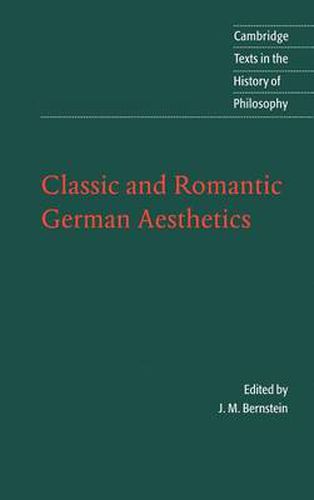Readings Newsletter
Become a Readings Member to make your shopping experience even easier.
Sign in or sign up for free!
You’re not far away from qualifying for FREE standard shipping within Australia
You’ve qualified for FREE standard shipping within Australia
The cart is loading…






This volume brings together major works by German thinkers, writing just prior to and after Kant, who were enormously influential in this crucial period of aesthetics. These texts include the first translation into English of Schiller’s Kallias Letters and Moritz’s On the Artistic Imitation of the Beautiful, together with new translations of some of Holderlin’s most important theoretical writings and works by Hamann, Lessing, Novalis and Schlegel. In a philosophical introduction J. M. Bernstein traces the development of aesthetics from its still rationalist and mimetic construction in Lessing, through the optimistic construal of art and/or beauty as the appearance of human freedom in the work of Schiller, to Holderlin’s darker vision of art as the memory of a lost unity, and the variations of that theme - of an impossible striving after the lost ideal - which are found in the work of Schlegel and Novalis.
$9.00 standard shipping within Australia
FREE standard shipping within Australia for orders over $100.00
Express & International shipping calculated at checkout
This volume brings together major works by German thinkers, writing just prior to and after Kant, who were enormously influential in this crucial period of aesthetics. These texts include the first translation into English of Schiller’s Kallias Letters and Moritz’s On the Artistic Imitation of the Beautiful, together with new translations of some of Holderlin’s most important theoretical writings and works by Hamann, Lessing, Novalis and Schlegel. In a philosophical introduction J. M. Bernstein traces the development of aesthetics from its still rationalist and mimetic construction in Lessing, through the optimistic construal of art and/or beauty as the appearance of human freedom in the work of Schiller, to Holderlin’s darker vision of art as the memory of a lost unity, and the variations of that theme - of an impossible striving after the lost ideal - which are found in the work of Schlegel and Novalis.